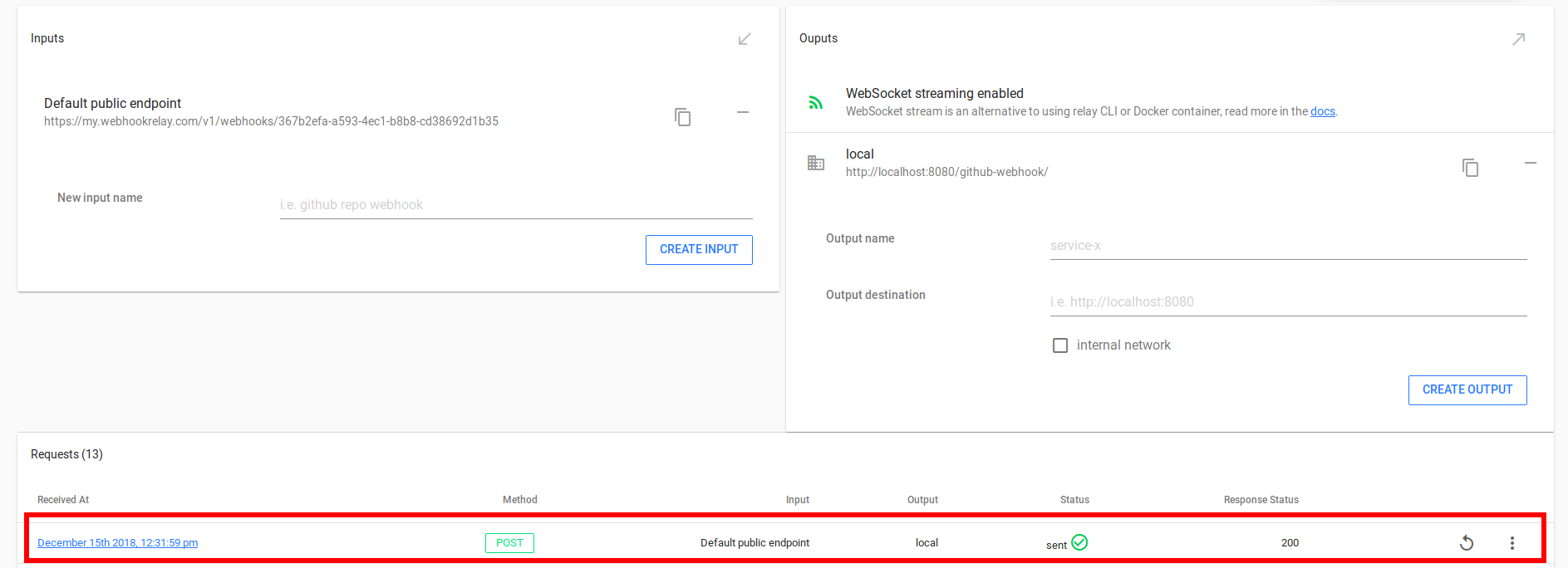
If you are creating webhook configuration manually in GitHub, use destination as it’s the endpoint on which the plugin is listening for webhooks. There are alternative options to run the forwarding daemon, such as Docker container. Once you have the relay CLI on the machine where you run Jenkins, type: relay forward -bucket github-webhooks Configure it to forward all webhooks to This will ensure that webhooks will reach Jenkins server. Go to your bucket configuration and create a bucket called github-webhooks. Once you have it, add GitHub credentials - your username and GitHub token. Plugin installation instructions can be found here. You should see a similar screen:įollow the steps to configure your Jenkins initial admin user.

Go to, click CREATE TOKEN and copy/paste login command into the terminal, it should be something like: relay login -k -s Start tunnel $ relay connect :8080 & chmod +wx relay & sudo mv relay /usr/local/bin Login On a 64-bit Linux OS it’s: curl -sSL > relay \ Then, either open your node firewall (or check Vagrant port forwarding) or do the easy thing: connect with the relay: Get CLI Connecting to Jenkinsįirst, get your Jenkins token: cat /var/lib/jenkins/secrets/initialAdminPassword The only caveat I encountered this time with Jenkins, was the jdk version mismatch. You can get the IP address by typing ifconfig in the terminal. In my case, I just grabbed a Vagrant box from : nfigure("2") do |config|Ĭonfig.vm.network "private_network", type: "dhcp"Īnd we have our VM. It will also work behind a corporate firewall. This setup will work without configuring router, firewall or having a public IP. Subsequent builds will be triggered on any new commits and GitHub pull request status will show whether build succeeded or failed. Jenkins will now receive push and pull request notifications for that repository, and related builds will be automatically triggered.ġ) We push a new commit with a message "Update README.md" in the GitHib repository:Ģ) If the webhook has been properly set up, on the Jenkins interface we should see that the build of the linked project has started:ģ) Clicking on the ongoing build, we can appreciate that it has been triggered by the commit:Ĥ) Projects configured downstream will be also built if the build completes successfully.In this short guide we will configure Jenkins to start builds on GitHub pull requests.

The next step is to tell Jenkins to build when the Github hook is called. set the credentials to git.gcube (only if the repository is NOT public),.
#Jenkins git webook code#
In Jenkins, under the project settings page "Source Code Management": Go in the page: Manage Jenkins -> Configure System -> GitHub: This will give us the ability to configure Jenkins to use our GitHub repository. The GitHub plugin ( ) must be installed on Jenkins. GitHub Plugin on Jenkins (only for Jenkins admins) This can be a very useful improvement to continuous integration setup with Jenkins because this method is only telling Jenkins to attempt a new build when a change is detected rather than polling on an interval, which can be a very inefficient. This guide details the steps to have Jenkins automatically create a build if it detects changes to a GitHub repository. You need admin permissions on that repository. In order for builds to be triggered automatically by PUSH and PULL REQUEST events, a Jenkins Web Hook needs to be added to each GitHub repository.


 0 kommentar(er)
0 kommentar(er)
